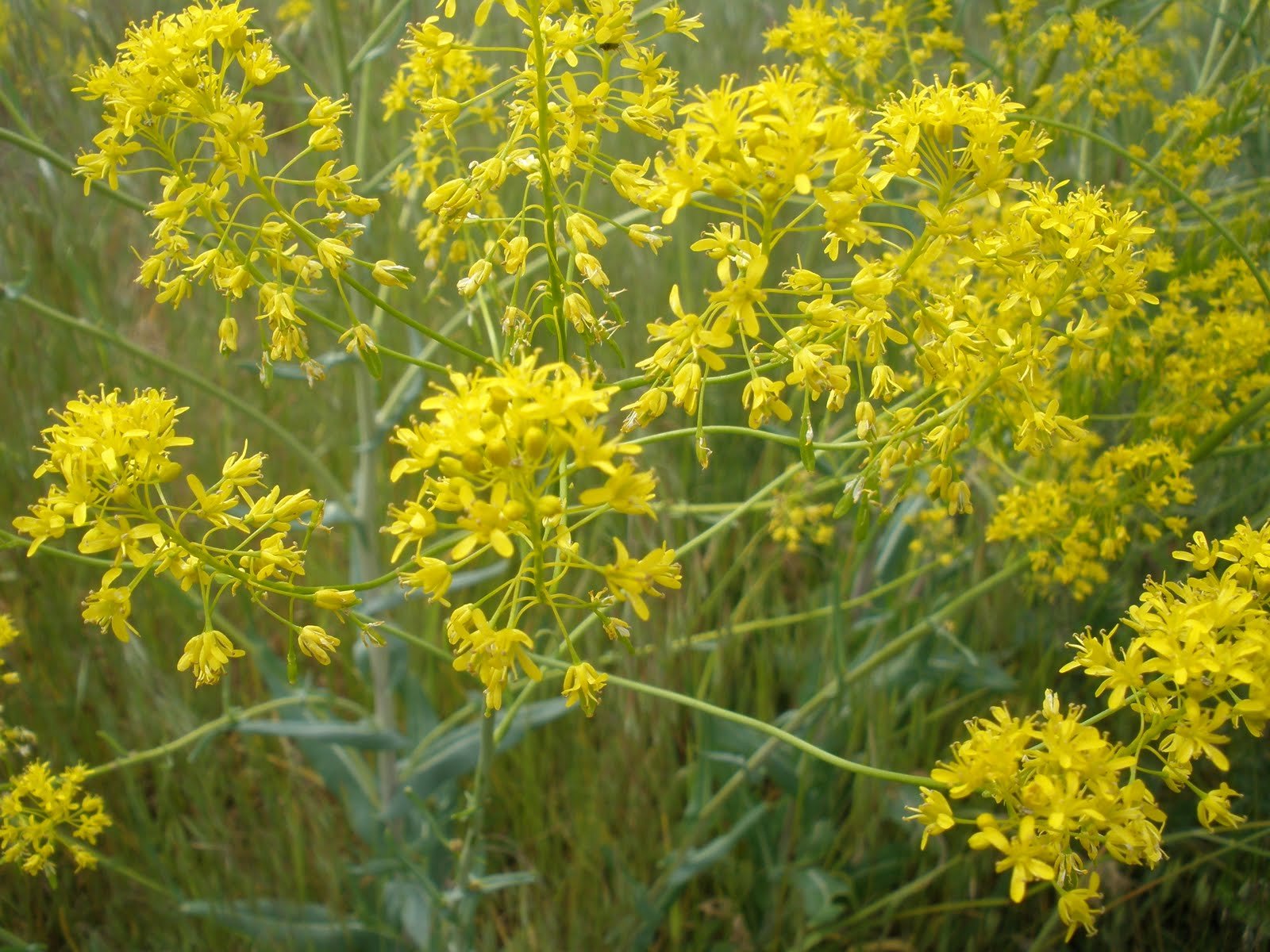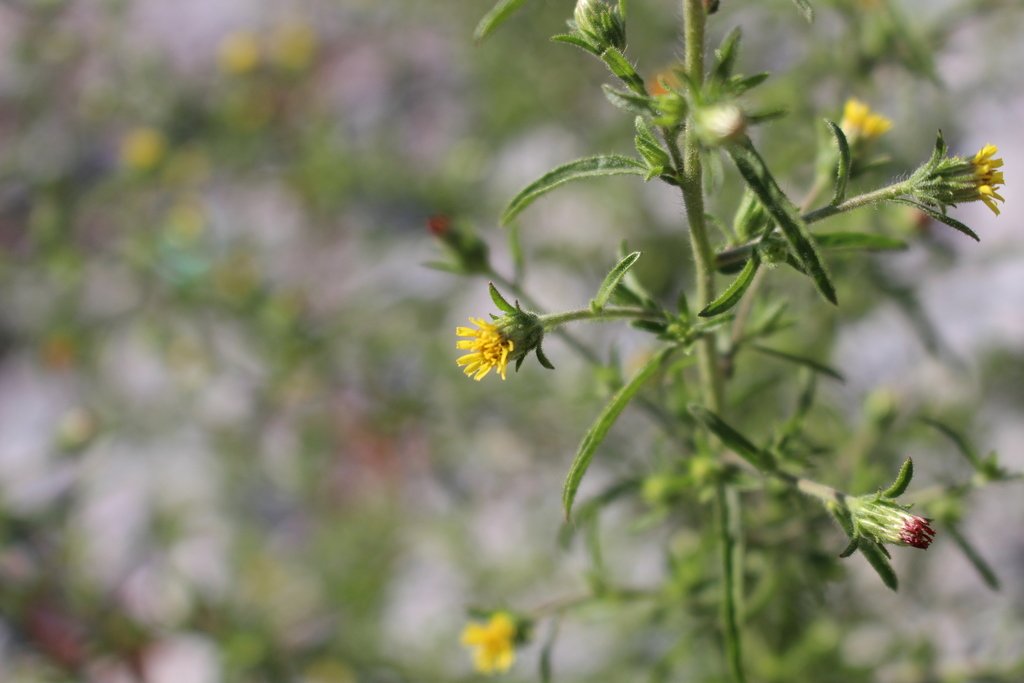WRTC Forestry Crew Replants Conifers While the Botany Crew Detects and Removes Invasive Species and Noxious Weeds
The WRTC Forestry Crew and GE Forestry work together in a portion of the August Complex footprint. Photo by Heather Murphy.
The Watershed Center Botany and Forestry Crews are hard at work this year, dividing and conquering to cover more ground, detect invasive plants, and replant native conifers. The Botany Crew is utilizing “Early Detection Rapid Response” protocols in the McFarland, Monument, River, Salt, and Lava Fire footprints to head off invasive species before they begin to spread. The Forestry Crew has been replanting the August Complex fire scar in the Six Rivers National Forest with native conifer species.
This spring, the WRTC Forestry Crew helped manage a reforestation contract within the August Complex footprint and contracted with GE Forestry to help plant a total of 105,859 seedlings in 386 acres. This work is vital to ensuring native conifers repopulate areas that experienced high intensity fire. Although we have a 15-person Forestry Crew this year (the largest we’ve ever had!) we still needed to partner with a contractor to get this work completed this season. The remaining 114 acres of fire scar are slated for replanting later this year.
A forestry technician presses a seedling into the ground. Photo by Heather Murphy.
As the season progresses, the Forestry Crew will be collecting pinecones in concert with the Botany Crew to bolster a CAL FIRE conifer nursery. Without human intervention, the likelihood of conifers regenerating in high-intensity fire footprints is low. Among the species collected will be: Sugar pine, Douglas fir, Ponderosa pine, and Incense cedar. By collecting cones and growing seedlings from the area, we will be adding to the available nursery stock and supporting reforestation projects locally and in other mixed conifer forests. (Learn more about reforestation).
Meanwhile, the WRTC Botany Crew now consists of 20 seasonal workers, all striving to manage noxious, invasive species and keep them from outcompeting native species. Dyer’s woad, knapweed, and invasive brooms (particularly Scotch and French) are well-known invasives that have been stealing water, nutrients, sunlight, and space from our local plant life. Additional plants to keep an eye out for include stinkwort, butterfly bush, and garlic mustard.
Dyer’s Woad.
Compared to neighboring counties, Trinity County has relatively little Dyer’s woad encroaching in native floral habitats. This noxious weed can infest both disturbed (say, by wildfire) and undisturbed land, preventing native plant seeds from germinating and decreasing forage quality for livestock. Vectors of spread for Dyer’s woad include contaminated hay, passage on wind and in waterways, wheel wells and tires, as well as foraging livestock. Mowing is often the best treatment. This weed can be identified by its four-petaled yellow flowers, green seed pods that turn black as they mature, and leaves that can be waxy with a prominent white midrib, clasping around the stem. Be aware of native lookalikes! These include American yellow rocket (Barbarea othoceras), California goldenrod (Solidago elongata), Western wallflower (Erysimum capitatum), and rubber rabbitbrush (Ericamerica nauseosa).
Common Knapweed.
Knapweed is another prevalent invasive species, presenting much of the same undesirable effects as Dyer’s woad, with a unique feathery pappus (for seed dispersal) that can result in one plant releasing 25,000 seeds. Young knapweed begins as a basal rosette and can grow up to 5 feet tall when mature! Leaves are lobed and pale grayish green while flowers are white or pinkish purple. The best way to treat knapweed is pulling the entire plant and tap root, or at least 2-4 inches of the tap root. Either dispose of these plants at an appropriate facility or burn them. Do NOT compost knapweed! Species to be on the lookout for reporting and removal include diffuse knapweed (Centaurea diffusa) and spotted knapweed (Centaurea stoebe).
Invasive brooms, particularly Scotch Broom (Cytisus scoparius) but also French Broom (Genista monspessulana), are a prolific noxious weed in Trinity County. These weeds can infest disturbed areas (i.e. fire footprints, along roadsides), increase the fire danger and acidity of the surrounding soil, and produce toxic foliage that is harmful to wildlife. Each mature plant can produce 20,000 seeds and some seeds can survive, dormant, up to 80 years in the soil! Eradication has been extremely challenging. Just like knapweed, these plants need to be hand-pulled in their entirety, including as much of the tap root as possible. The material cannot be composted. It must be taken to an approved facility or burned. French and Scotch broom vary in their physical properties. The French broom has a rounded stem, fruits and plants covered in hair, and 1-3 leaflets per leaf while the Scotch broom has a 5-sided stem, hair on fruit margins and young plants exclusively, and 3 leaflets per leaf.
Scotch Broom.
French Broom.
Stinkwort.
Stinkwort (Dittrichia graveolens) is relatively new to Trinity County, entering via infested gravel from Shasta County and spreading along the Highway 299 corridor. This plant is sticky and aromatic, causing rashes and headaches for sensitive individuals who touch it, and it is poisonous to livestock. Each plant can produce 15,000 seeds and stinkwort is particularly prolific in disturbed areas.
Closeup of Butterfly Bush.
Butterfly bush (Buddleia davidii) is a 3-15 foot tall shrub that produces showy purple or white flowers. Each individual flower stalk can produce 40,000 seeds which then live in the soil for 3-5 years. This bush, although dubbed “butterfly bush” does not provide food for insects at all stages of life, leaving nothing to eat for caterpillars. This plant is commonly used in landscaping but can spread into wild habitats, particularly riparian corridors. Weaverville is a butterfly bush hotspot as the shrub has escaped many gardens.
Garlic mustard.
Garlic mustard (Alliaria petiolata) thrives in shade and sun, outcompeting native plants in disturbed areas and riparian habitat before moving into undisturbed forest habitat. One plant produces thousands of seeds that can survive in the soil for up to 10 years. Garlic mustard also emits chemicals that prevent other surrounding seeds from germinating. Rush Creek, near the intersection of Trinity Lake Road and Rush Creek Road in Lewiston, is a notable hotspot. All of these up-and-coming noxious, invasive weeds should be reported and removed whenever possible. Remove the roots and burn the material. Do not compost any of the plant components.
Controlling noxious weeds is a big job. We’re grateful for our partners at the Trinity County Resource Conservation District, Forest Service, and all of the private residents who are working together to manage them. Early detection and proper removal are our best available tools: you can help by reporting populations to the WRTC Botany Crew. Email NatRes@thewatershedcenter.com with the subject line: Noxious Weeds. In your message tell us what noxious species you’ve detected, how large the impacted area is, and exactly where it is located. If it is on your property, follow the guidelines listed above to effectively treat your land. Help us eradicate harmful plants and improve habitat for native species, and learn more about native species in Trinity County via iNaturalist HERE.









